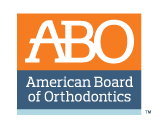March 27th, 2025
Press Pause If you are getting braces in the near future, it’s very important to see your regular dentist first. That way, any cavities or other dental problems can be treated before your first orthodontic appointment at our Muncie office. Play it Safe Once you have your braces, you’ll hearing a lot about how you…
Continue Reading
March 20th, 2025
Orthodontic braces are used to straighten the teeth, which not only creates a more pleasing appearance, but also helps prevent tooth decay and other oral health problems. Braces are only effective when they are properly cared for, however. Certain foods, for example, are better suited for individuals who have braces, as opposed to hard and…
Continue Reading
March 13th, 2025
By now, you’re very familiar with the basic building blocks of your braces. Brackets, wires, and ligatures are no mystery to you. But suddenly, you’re hearing a brand new term—“power chains.” What exactly are these power chains, and why does your orthodontist think you need them? Let’s see how power chains are *linked* to your…
Continue Reading
March 6th, 2025
Are you an adult who is considering getting braces? Perhaps you’ve had them before, but over the years that dental work has been reversed. Or maybe you’ve never had any orthodontic work done, but are considering braces for the first time. In either case, Gregg Ortho can help you enjoy straighter teeth, an improved bite,…
Continue Reading





